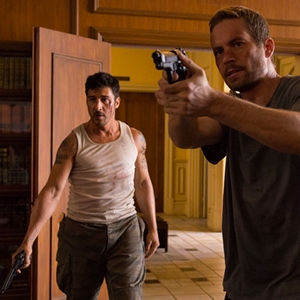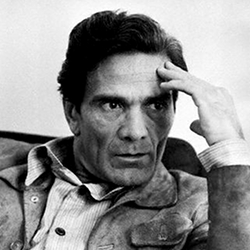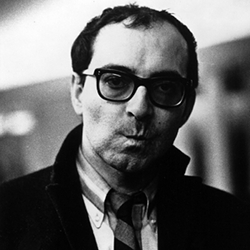
Brick Mansions Review

Brick Mansions (2014)
Cast: Paul Walker, David Belle, RZA
Director: Camille Delamarre
Country: France | Canada
Genre: Action | Crime | Drama
Official Site: Here
Editor’s Notes: Brick Mansions opens in wide release this Friday, April 25th.
Brick Mansions is defined by a great ability to move, not for any cornucopia of complex characters or socio-political themes. Its raison d’être is to showcase (and show-off) the holistic training discipline, Parkour, founded in the 1980s by David Belle. Essentially a combined remake of District B13 and District B13: Ultimatum, Brick Mansions is a lean and unpretentious arcade of masculine (and at some points, powerfully feminine) fisticuffs and Parkour pyrotechnics.
This movie vaults over the recent The Raid 2, which was a plot-heavy muchness of “pencak silat”, the Indonesian martial art that astounded viewers in The Raid: Redemption. The Raid 2 is a slick yet dull wade through Quentin Tarantino-inspired set pieces where one fighter battles an endless supply of baddies in closed, often exquisitely designed public quarters. It’s a movie hitched to so many noir-narrative pretensions that writer, director, and editor Gareth Evans loses the relentless momentum from the simplicity of the first Raid.
Brick Mansions is faithful to the efficiency of Parkour, a discipline that is all about physically propelling oneself over, around, and through infrastructural obstacles of the urban jungle.
Brick Mansions is faithful to the efficiency of Parkour, a discipline that is all about physically propelling oneself over, around, and through infrastructural obstacles of the urban jungle. The idea is to maintain momentum, which is exactly what Brick Mansions does.
Like Gareth Evans, director Camille Delamarre is also a professional editor (Taken 2, Lockout) with a clear, almost textbook understanding of narrative pace and continuity. His film, edited by Carl Rizzo and Arthur Tarnowski, relies on the visceral impact of cuts and transitions, like when Delamarre cuts to black just before a foot crushes a man’s head that is wedged between two jail bars. It’s a moment when you can pretty much guarantee the audience will unanimously recoil in their seats with an“ooooooh!”.
 The Raid 2 also offers similar“oooooooh!”moments, but they are basically a pittance for being subjected to the film’s plodding mechanics (that meander on for 150 minutes!). Brick Mansions has a “plot”, but Delamarre decides not to over-complicate it. The movie, written by Luc Besson and Robert Mark Kamen, is basically about corruption in a dystopian Detroit and its mayor’s (Bruce Ramsay) efforts to replace a housing project with luxurious condominiums soon to be known as The Brick Mansions.
The Raid 2 also offers similar“oooooooh!”moments, but they are basically a pittance for being subjected to the film’s plodding mechanics (that meander on for 150 minutes!). Brick Mansions has a “plot”, but Delamarre decides not to over-complicate it. The movie, written by Luc Besson and Robert Mark Kamen, is basically about corruption in a dystopian Detroit and its mayor’s (Bruce Ramsay) efforts to replace a housing project with luxurious condominiums soon to be known as The Brick Mansions.
The film’s moral centre belongs to undercover cop Damien Collier (the late Paul Walker), who teams up with lone wolf Lino Dupree (David Belle himself) to take down the ex-military-turned-drug-kingpin Tremaine Alexander (RZA) and his clan, who frequently quote RZA’s own hip-hop group Wu Tang Clan with rebellious zeal. Tremaine kidnaps Lola (Catalina Denis), Lino’s ex, and plots to annihilate Detroit with a rocket. From there it’s a race against the clock, like a barebones version of the climax to The Dark Knight Rises, which also concluded with the Dirty Harry clichéof a straight cop (here Walker, there Joseph Gordon-Levitt) rejecting a corrupt American establishment by tossing his badge from a steep drop.
Walker and Belle are alpha males who combat evil together and at the same time constantly test and measure the other’s physical dominance.
Walker and Belle are alpha males who combat evil together and at the same time constantly test and measure the other’s physical dominance. They appreciate each other for their moral and muscular backbone. RZA’s character, on the other hand, dominates with cowardice, inflicting fear with the weapons at his disposal. His muscle is a tall-monstrous henchman (Robert Maillet), who offers up one of the movie’s main boss battles. This is not to sound p.c., but Brick Mansions could have benefited with casting a black character with moral resolve. Instead, the black characters are all fear-mongering “thugs” (where is Anthony Mackie when you need him? Well, see Captain America: The Winter Soldier).
Brick Mansions eventually does a moral backflip though, attempting to pardon its prejudices in class and race; only the twist feels ridiculously absurd. At the same time, this movie is not self-serious and takes precedence rather over the incredible acrobatics of Parkour. Delamarre also has fun with the idea that Parkour is a very radical, libertarian expression of the body. It’s a non-competitive skill that empowers and frees the individual, training one’s mind to work with the body and reimagine the potentialities for movement in urban spaces. Authoritarian governments seek the stasis and mindless obedience of its citizens –what Parkour firmly rejects.
That’s not to say Brick Mansions makes a political statement, but it certainly marvels at Parkour, a political movement (a “movement”in every way). As director, Delamarre is also able to make his scenes move, overcoming the generic music and spare visual style/effects that coat these proceedings. It’s a movie that is many things but dull. This is because Delamarre is a filmmaker who knows how to cut to the chase, with an emphasis –most importantly –on “cut”.





















